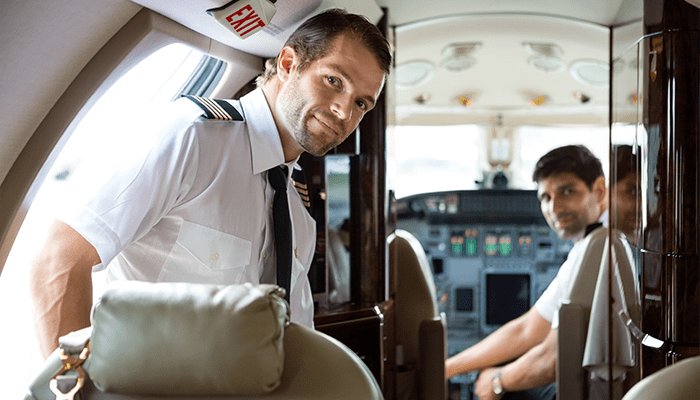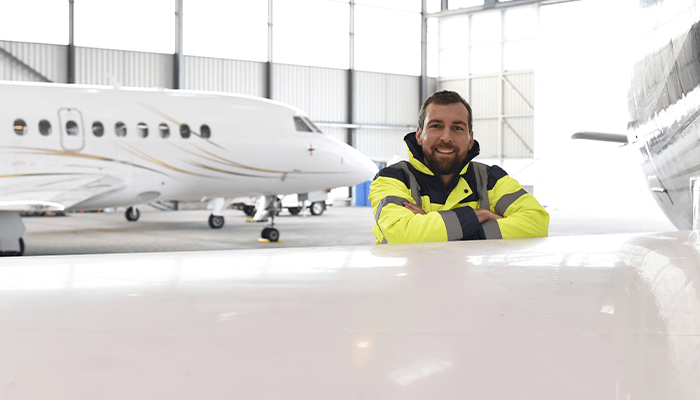
Independent Contractor Pilots and Risk Management
Aviation is no stranger to freelancing pilots. Maybe being a pilot is your full-time job or maybe you have a ‘day job’ outside of aviation but a side hustle flying corporate aircraft. Regardless of your independent contractor pilot gig, it would be worth considering how to manage your exposure. What is your exposure? Liability. The discussion of risk and liability are not fun topics, especially when compared to hopping in a turbo jet aircraft and going for a flight, but it is an important discussion. We always recommend having that discussion BEFORE an accident occurs.
Managing Risk
Wikipedia says risk management is ‘the identification, evaluation, and prioritization of risks followed by coordinated and economical application of resources to minimize, monitor, and control the probability of unfortunate events.’ In aviation, we can assume that unfortunate event is an aircraft accident. We will use a best-case scenario where the result of the aircraft accident is only physical damage to the aircraft. If you damage an aircraft as an independent contractor pilot, either the aircraft owner or operator, or the owner or operator’s insurance company, will be pointing fingers and looking for a responsible party.
What You Can Do to Manage Your Exposure as an Independent Contractor Pilot
- NOTHING – Believe it or not, this is an option, and the option most often chosen by independent contractor pilots that are blissfully flying along at the flight levels (ignoring or not thinking about the exposure).
- MINIMIZE THE RISK – One way to minimize the risk is to invest in your pilot skills. Investing time and money toward recurrent training can help minimize the risk of an aircraft accident. While a full motion simulator based recurrent training program is preferred by the aviation insurance underwriters, it is not always practical or prudent to complete that type of training. In some situations, in-aircraft training can be more appropriate than simulator-based training to help hone skills and procedures for specific avionics and operating environments that you encounter. Don’t thumb your nose at web-based training. There are several good options online for web-based training that can help with IFR procedure and weather proficiency training.
- TRANSFER THE RISK – From our perspective there are two ways you can ‘transfer’ your risk.
- Buy a non-owned aircraft insurance policy to cover your commercial pilot operations. This can be a little tricky because a commercial non-owned aircraft insurance policy can be difficult to find and unfortunately, very expensive. It is tempting to buy a non-owned aircraft insurance policy that is offered online. They are attractive because they are relatively inexpensive, but you need to be careful because those policies are typically offered for flight instructors or private renters and they will NOT provide coverage for commercial operation of non-owned aircraft, such as ferry flights or other pilot services.
- The alternate way you can transfer your risk is to do so contractually. After verifying the aircraft owner or operator has a primary aircraft insurance policy in place on the aircraft you are flying, you can request that you are added as an ‘additional insured’ on that policy. If you are added as an additional insured on the primary policy, you are provided with liability coverage – basically being pulled under the liability umbrella of the primary policy, but don’t stop there. You should also request that the insurance company provide you with a ‘waiver of subrogation.’ With a waiver of subrogation, the insurance company agrees to give up their right to come after you if you should damage the aircraft that they insure. Expect one of three things to happen when you request this contractual transfer of risk – either the insurance company will be unable / unwilling to add an independent contractor pilot, or they will add an independent contractor pilot but charge additional premium for it, or they will add an independent contractor pilot for no additional premium. The answer you receive may change depending on the condition of the aviation insurance market.
The management of risk is usually not a ‘this or that’ decision. Often times you have to use several tools in order to reduce your exposure to acceptable levels. Even after reducing your risk, aircraft accidents happen, which is why it is smart to assess your risk and attempt to minimize it, or transfer it, using one of the suggestions above. As aviation insurance professionals, AssuredPartners Aerospace is ready, willing, and able to help with your commercial non-owned aircraft risk management. To learn more, contact our team of specialists.
Featured News & Insights

When it comes to aviation insurance, many aircraft owners assume rates are set in stone. While market conditions and underwriter guidelines play a big role, you do have some influence over what you...

As flight departments seek greater flexibility and cost-efficiency, the use of independent contract pilots has become increasingly common. While this staffing model offers operational advantages, it...

When it comes to aviation insurance, comparing quotes isn’t as simple as lining up premiums and picking the lowest number. Unlike more commoditized lines of coverage, aviation policies are highly...